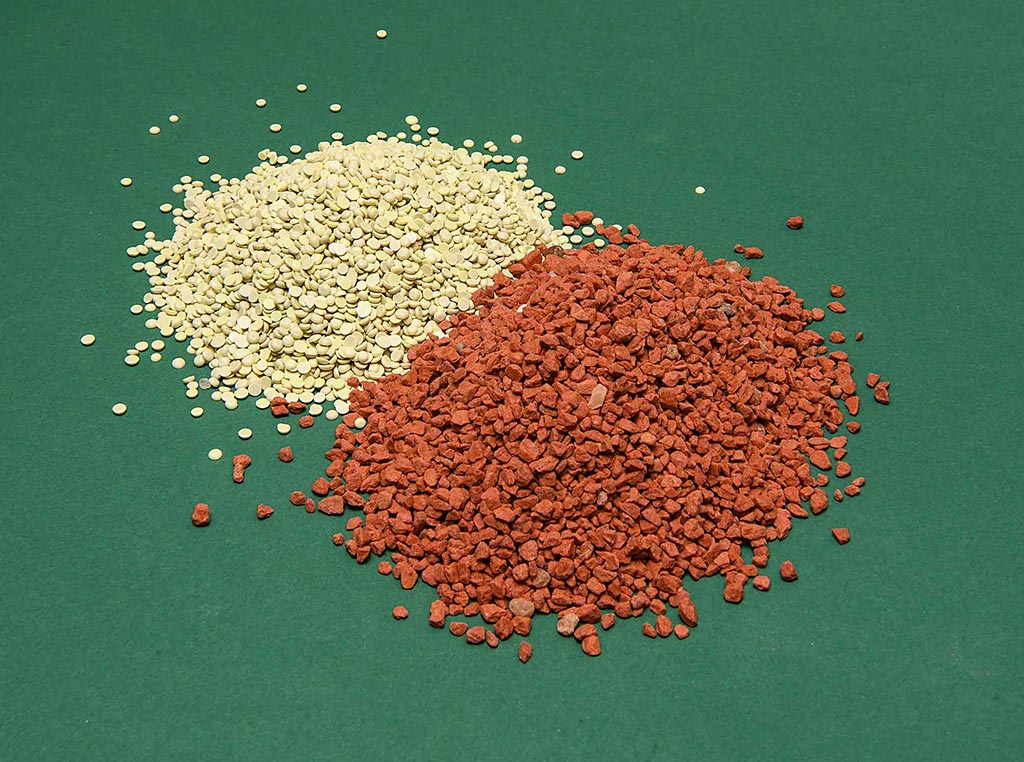Agriculture, Sustainability September 01, 2022
Nutrient Newcomers
.
Researchers need help finding a fit for sulfur and chloride fertilizers.
The traditional BIG THREE of crop nutrients are nitrogen, phosphorus and potassium, but it's become apparent that other players need to be in the fertilizer lineup for winning yields. Two of those—sulfur and chloride—are proving they may be worthy of larger roles and researchers want farmers' help in finding where they fit.
While unheard of just two decades ago, sulfur deficiency has grown into a frequent problem in corn, wheat, and alfalfa. In a 2022 update on the use of sulfur fertilizer on corn in Indiana, Purdue agronomist Bob Nielsen used soil test results from A&L Labs to illustrate the change. "From 2005 to 2007 fewer than 3% of submitted soil samples tested low or very low in sulfur. That proportion has increased steadily since then and is now consistently above 50 and even 60% in some years."
Researchers explain that part of the reason for this change is that higher yields are removing more sulfur from the soil. However, the primary cause is that less 'free' sulfur is being deposited because the 1990 Clean Air Act that has reduced sulfur dioxide (acid rain) emissions from coal-fired power plants. Data from the EPA shows that a sulfur deposition rate of roughly 16 pounds per acre per year in 2000 has been reduced to less that 4 pounds today.
Test results. Nielsen and colleague Jim Camberato began field scale trials on sulfur fertilization of corn in 2017. "We got a positive yield response in 15 of our 40 trials and the average increase was 11.9 bushels per acre," he reports.
Nielsen says the use of 10 to 15 pounds of sulfur per acre was the threshold, but it wasn't needed on all fields and that's where he and others need farmers' help.
"The response to sulfur varies by soil type. There’s a lot of spatial variability and standard soil sampling is not a reliable tool for sulfur. We need more on-farm trials to supplement our ongoing research efforts," he says.
For a video of Nielsen's update and on-farm testing details visit: https://youtu.be/XFV6vUpgphI.
In a recent Strategic Farming: Let's Talk Crops webinar from the University of Minnesota, researchers Jeff Vetsch and Dan Kaiser summarized their recent sulfur research. "We had traditionally thought sulfur deficiency only occurred on sandy soils with low organic matter levels, but we found it's also a problem on heavier textured soils," says Vetsch.
Kaiser adds that a 2010 study that found a 22 bushel corn yield response to only five pounds per acre of sulfur on a heavy-textured soil was a real game changer. "Our research is continuing, but we'd like to hear from farmers with their ideas (dekaiser@umn.edu).
Chloride concern. University of Nebraska extension educator Nathan Mueller believes the deficiency of both sulfur and chloride could be hampering wheat yields in his southeast Nebraska area. "Preliminary data and local observations suggest these two nutrients may be needed, especially for no-till winter wheat after soybeans," he says.
Based on chloride research done at Kansas State University, Mueller analyzed the flag leaves from 30 area wheat fields. "Tissue analysis showed ten fields were low in chloride. The Kansas studies showed an average yield increase of 8% due to chloride fertilizer application. A rate of 20 pounds of chloride per acre is sufficient and is available in potash fertilizer, which is 45% chloride.
Mueller says sulfur deficiency—often mistaken for nitrogen deficiency in wheat—is also a problem—one highlighted by farmers in his extension advisory group. "Because sulfur deficiency is not a historical issue, there's little local research. Farmers can help solve that with on-farm research through the Nebraska On-Farm Research Network (https://on-farm-research.unl.edu)." ‡
Read More

AGRICULTURE, SPECIALTY/NICHE
Steeping a Second Career
Automotive engineer turned specialty coffee grower.

AGRICULTURE, FARM OPERATION
Using All the Avocados
Father and daughter make most of the growing avocado market.


